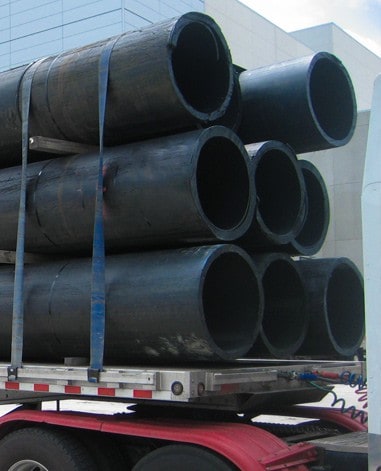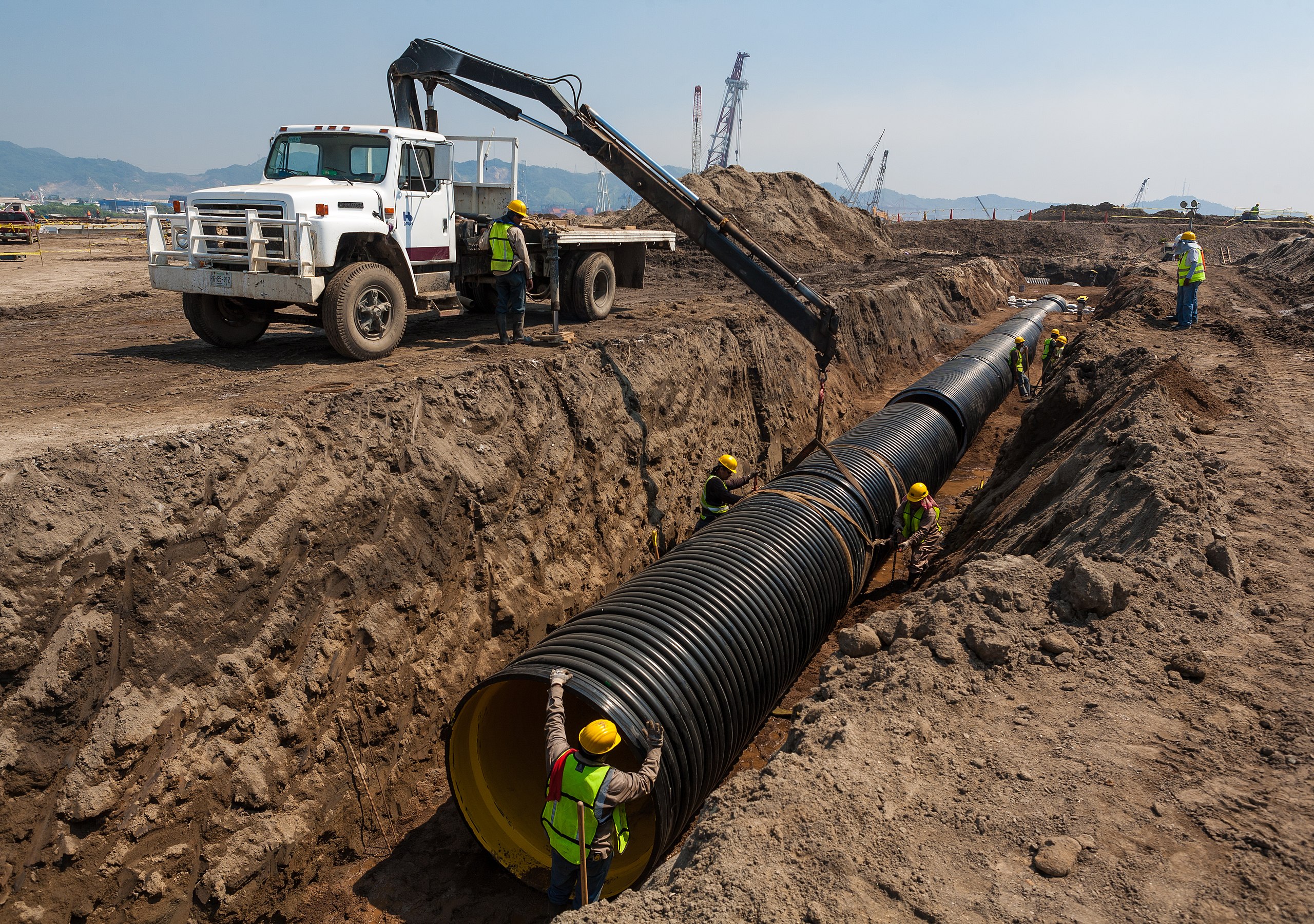Texas hdpe pipe manufacturer: Sustainable Innovations
Wiki Article
Recognizing the Key Conveniences of HDPE Pipeline for Water and Wastewater Management
Using HDPE pipe in water and wastewater administration provides countless advantages that merit factor to consider. Its outstanding sturdiness and lengthy lifespan make it a recommended option for many jobs. Additionally, the material's resistance to deterioration and chemical damage enhances its dependability in various environments. Nonetheless, the benefits expand past just longevity and resistance. Discovering its cost-effectiveness and environmental effect reveals much more engaging reasons for its extensive adoption in modern-day infrastructureExceptional Resilience and Longevity

HDPE pipeline stands apart for its remarkable resilience and durability, making it a favored option in water management systems. Constructed from high-density polyethylene, these pipes can endure considerable pressure and tension, guaranteeing reputable efficiency in time. Their robust nature enables them to withstand extreme environmental conditions, including temperature level changes and soil motions, which can trigger other products to fail.
The life-span of HDPE pipes typically surpasses half a century, offering a cost-efficient service for communities and industries alike. Furthermore, the material's light-weight residential properties streamline installation, reducing labor expenses and timeframes. This resilience decreases the requirement for regular repair work or substitutes, additionally improving its financial appeal.
In water monitoring applications, the integrity of HDPE pipes means fewer disturbances and improved service continuity, making them integral to sustainable infrastructure development. The mix of durability and durability strengthens HDPE's duty as a foundation in efficient water monitoring options.

Resistance to Corrosion and Chemical Damages
While many materials catch corrosion and chemical damage over time, HDPE pipelines show exceptional resistance, making them suitable for numerous water monitoring applications. This strength originates from the molecular framework of high-density polyethylene, which is inherently non-reactive and does not corrode like steels or break down from direct exposure to harsh chemicals. Consequently, HDPE is very effective in environments with hostile materials, such as wastewater systems that might consist of acids, bases, and organic solvents.
Additionally, HDPE pipelines can withstand environmental variables such as dirt level of acidity and saline conditions, additionally enhancing their suitability for diverse applications (American Plastics HDPE Pipe Manufacturing). Their capability to preserve structural stability over time reduces the danger of leaks and failings, which is important in making sure the safety and security and integrity of water distribution and wastewater management systems. As a result, the resistance to rust and chemical damage noticeably contributes to the general performance and long life of HDPE piping remedies
Cost-Effectiveness and Economic Benefits
When thinking about the monetary effects of water administration systems, the cost-effectiveness of HDPE pipelines comes to be obvious. These pipes offer lower installment and maintenance costs contrasted to conventional products like metal or concrete. Their light-weight nature streamlines transport and installment, causing decreased labor costs. Additionally, HDPE pipelines display a lengthy life-span, frequently going beyond half a century, which translates to fewer substitutes and long-lasting cost savings.In addition, the resistance of HDPE to deterioration and chemical damages decreases the need for costly repairs and replacements. The pipes also support effective water flow, lowering energy costs linked with pumping systems. By alleviating leakages and water loss, HDPE pipelines add to substantial financial advantages for districts and markets alike. On the whole, the preliminary financial investment in HDPE piping can yield substantial monetary returns over the life-span of the water management system, making it a prudent choice for lasting infrastructure advancement.
Ecological Sustainability and Reduced Influence

Versatility and Flexibility in Installation
As a result of their one-of-a-kind properties, HDPE pipelines use exceptional convenience and versatility in installment, making them suitable for a large array of applications. Their light-weight nature allows for much easier handling and transportation, reducing labor expenses and installment time. HDPE pipes can be bent and formed to fit different surfaces and job demands, which is particularly valuable in testing atmospheres.In addition, their resistance to deterioration and chemical damages permits installation in varied settings without the demand for specialized safety layers. The ability to fuse joints produces a continuous, leak-free system, enhancing the total stability and reliability of the installation. HDPE's adaptability also fits ground activity, reducing the danger of damage in areas vulnerable to changing soil. On the whole, these qualities make HDPE This Site pipelines not only flexible yet likewise a preferred selection for water and wastewater management systems.
Often Asked Questions
How Does HDPE Pipeline Compare to PVC in Water Administration Applications?
HDPE pipe uses remarkable adaptability, resistance to rust, and resilience contrasted to PVC. Its lighter weight facilitates less complicated installment, while its lengthy lifespan decreases substitute expenses, making HDPE a favored option in water management applications.What Is the Life Expectancy of HDPE Piping Under Common Conditions?
Under normal conditions, HDPE pipes can have a life-span Homepage varying from 50 to 100 years. Their toughness and resistance to deterioration add to their long-term performance in different applications, making them a reputable choice for framework.Are HDPE Pipeline Recyclable After Their Service Life?
Yes, HDPE pipes are recyclable after their service life. hdpe pipe in stock Midland TX. They can be refined and repurposed right into new products, greatly reducing ecological effect and advertising sustainability within the market, making them a green option for piping remediesWhat Is the Setup Process for HDPE Pipeline?
The setup process for HDPE pipelines involves site prep work, trenching, pipeline blend or mechanical joining, backfilling, and pressure screening. Appropriate techniques ensure a sturdy and efficient system for delivering water and wastewater successfully.Can HDPE Pipeline Be Made Use Of for Both Drinkable and Non-Potable Water Systems?
Yes, HDPE pipelines can be used for both safe and clean and non-potable water systems. Their versatility, durability, and resistance to deterioration make them plumbing leak in ceiling ideal for different applications, making sure safe and efficient transport of water in different contexts.Report this wiki page